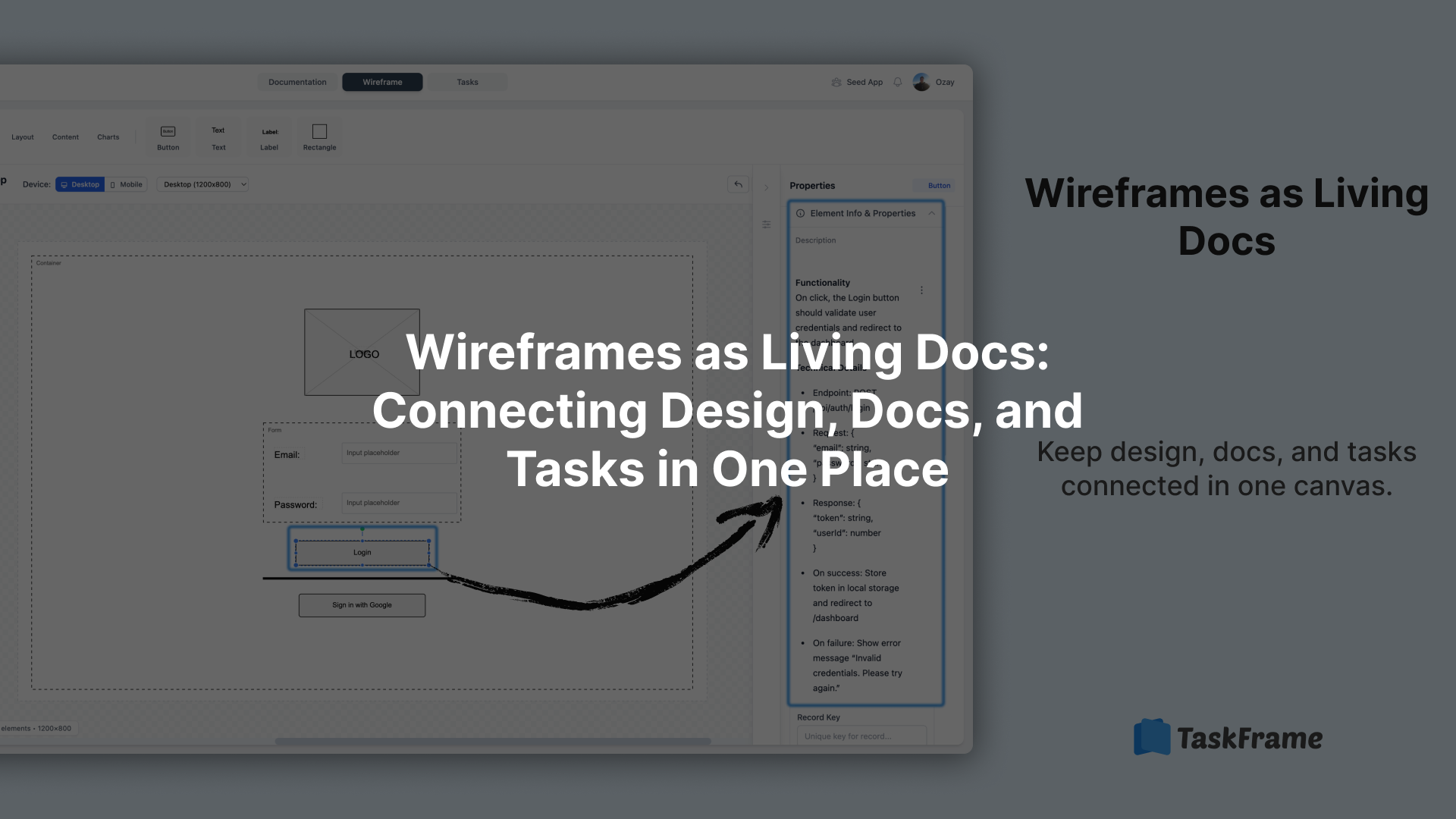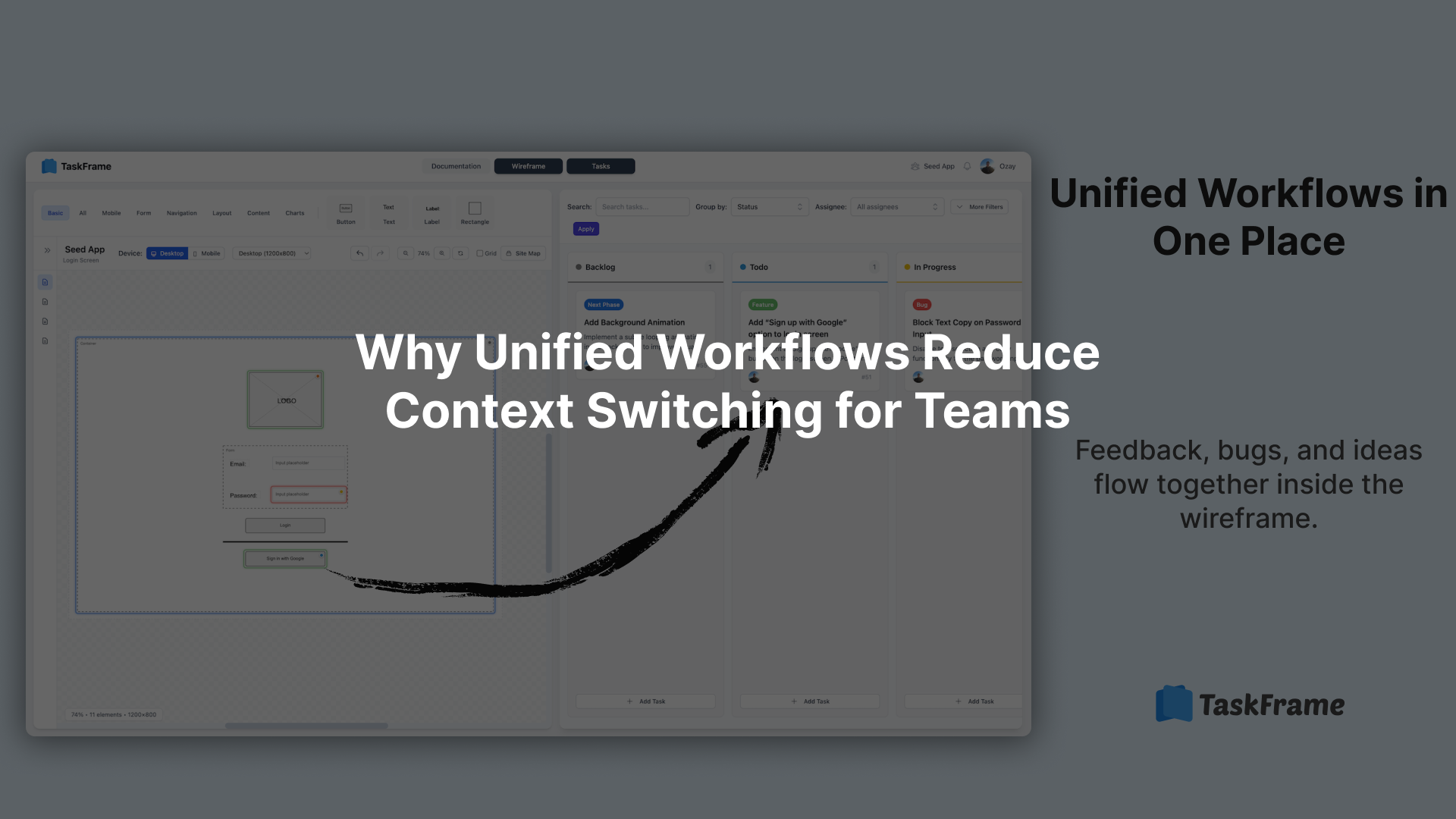· Product Management · 3 min read
Create Tasks Directly from Wireframes for Better Team Alignment
Creating tasks from wireframes keeps context clear, reduces back-and-forth, and improves collaboration between product and development teams.
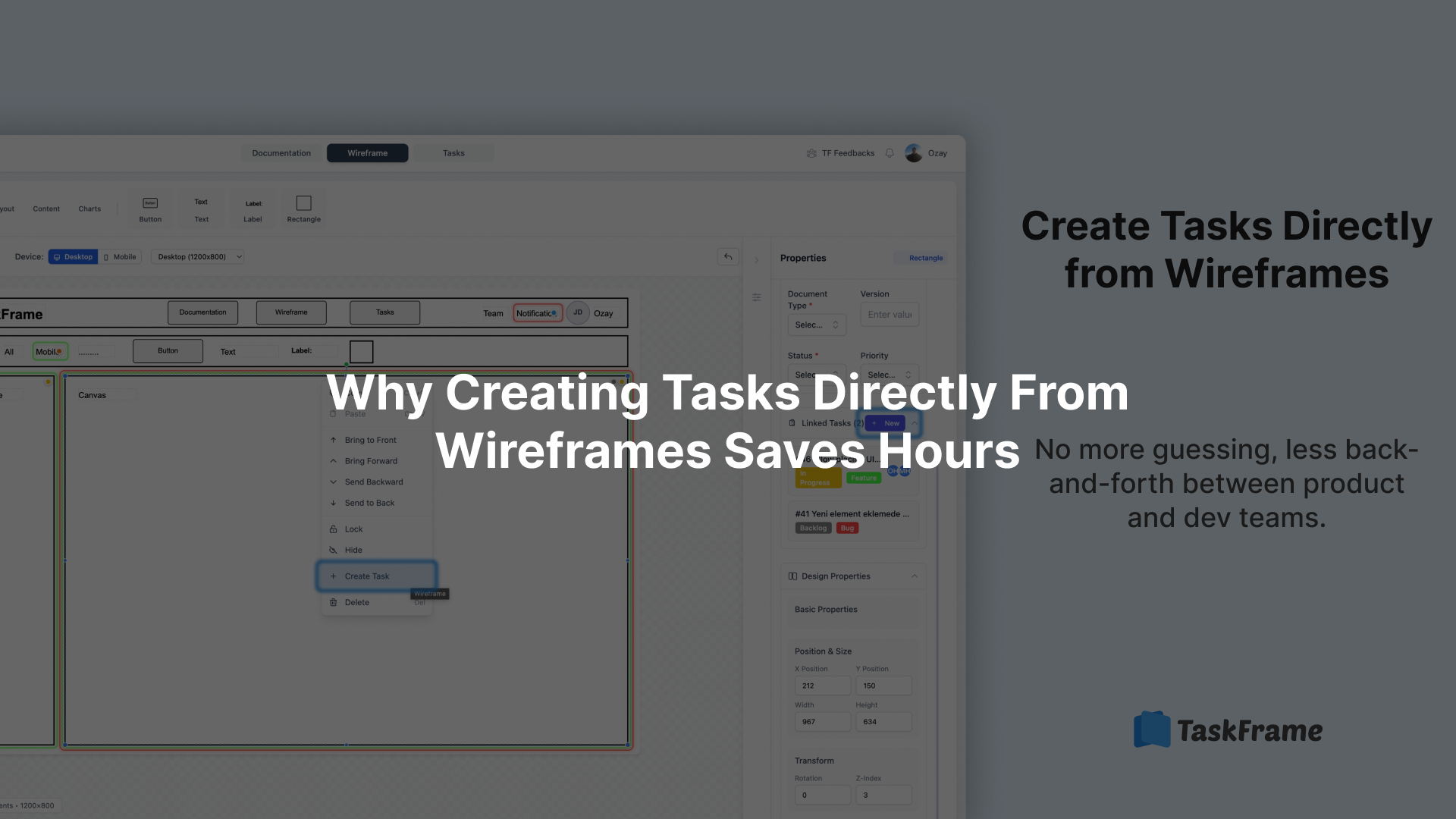
Introduction
One of the biggest challenges in modern product development is keeping everyone aligned. Product managers, designers, and developers often speak in different terms. Tasks live in project management tools, while design decisions and rationale live in separate files or documents. This separation creates confusion, delays, and constant clarification requests.
What if tasks were not detached from the design, but created directly where the work starts. Inside the wireframe?
That is the idea behind TaskFrame. By allowing tasks to be created directly from wireframes, every piece of context stays connected. Teams no longer need to guess what a task means or where it belongs.
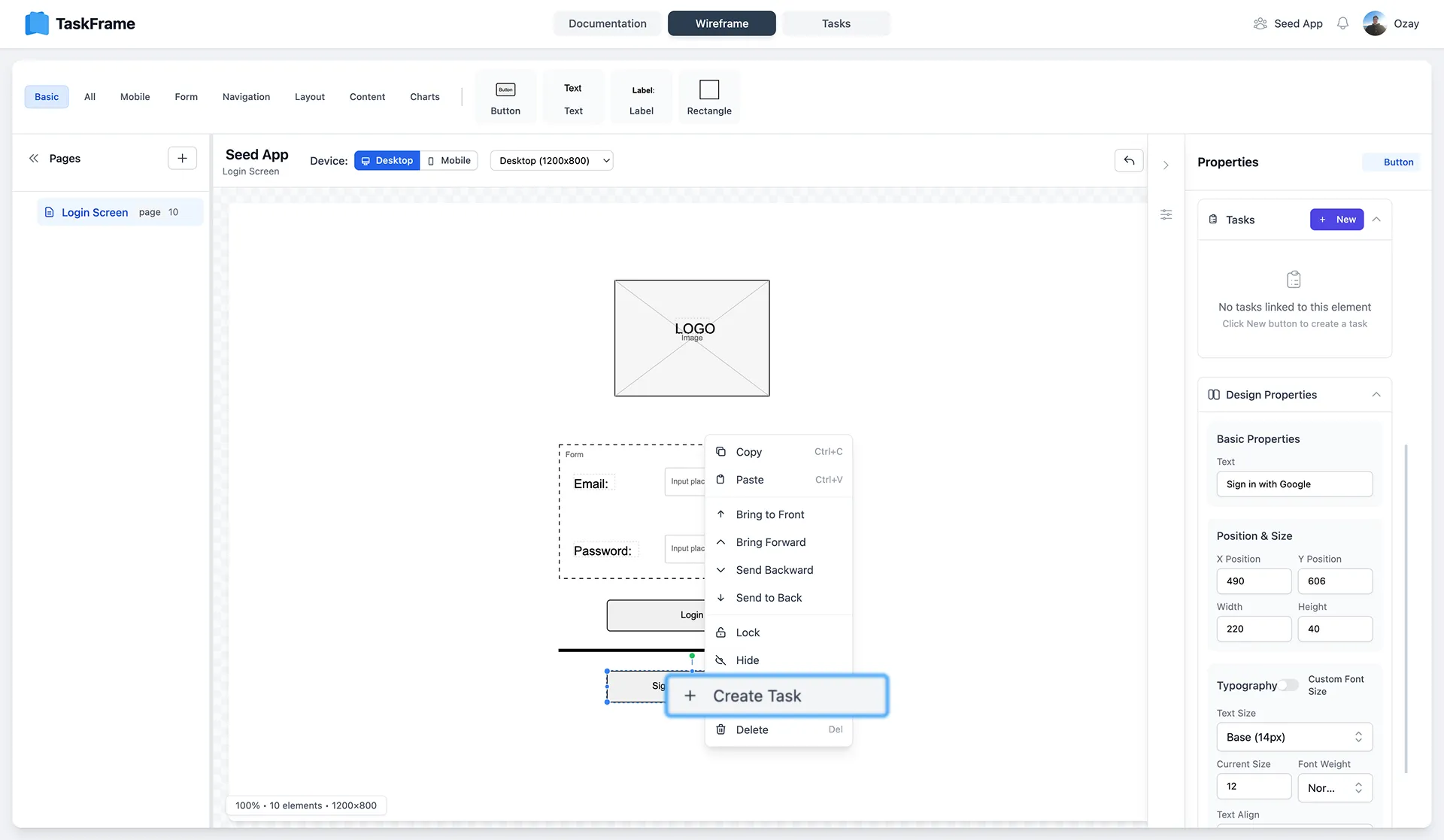
Why tasks should come from wireframes
In traditional workflows, tasks are written in isolation. A product manager might open a task board and write: “Add search bar to homepage.”
But where exactly should it go? What size should it be? How should it behave? Without linking the task to the design element, developers are left to interpret, often leading to back-and-forth and wasted time.
By creating tasks directly from wireframes:
- The visual context is preserved.
- Developers see exactly which element the task refers to.
- Designers and PMs save time explaining.
- Miscommunication is reduced, leading to faster delivery.
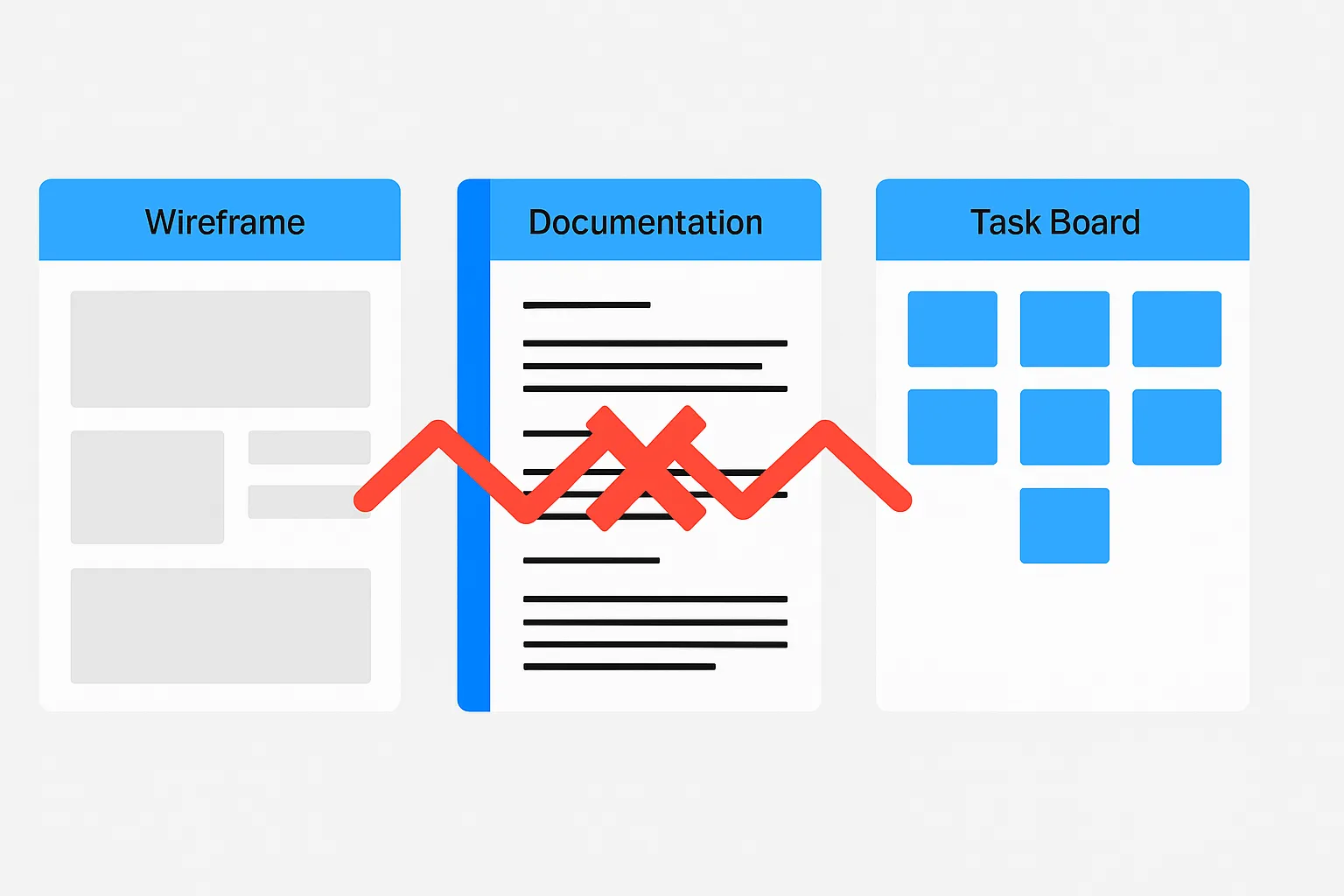
The problem with context switching
Context switching costs teams far more than they realize. Studies show that switching between tools and trying to reconnect information can eat up 20–30% of productive focus time.
- Product managers document in one place.
- Designers annotate in another.
- Developers track tasks in yet another.
The result is fragmented workflows and endless clarifications. A simple feature update can take hours longer because the context is lost in the shuffle.
Wireframe-based tasks eliminate this by keeping the “what” and the “why” in the same place.
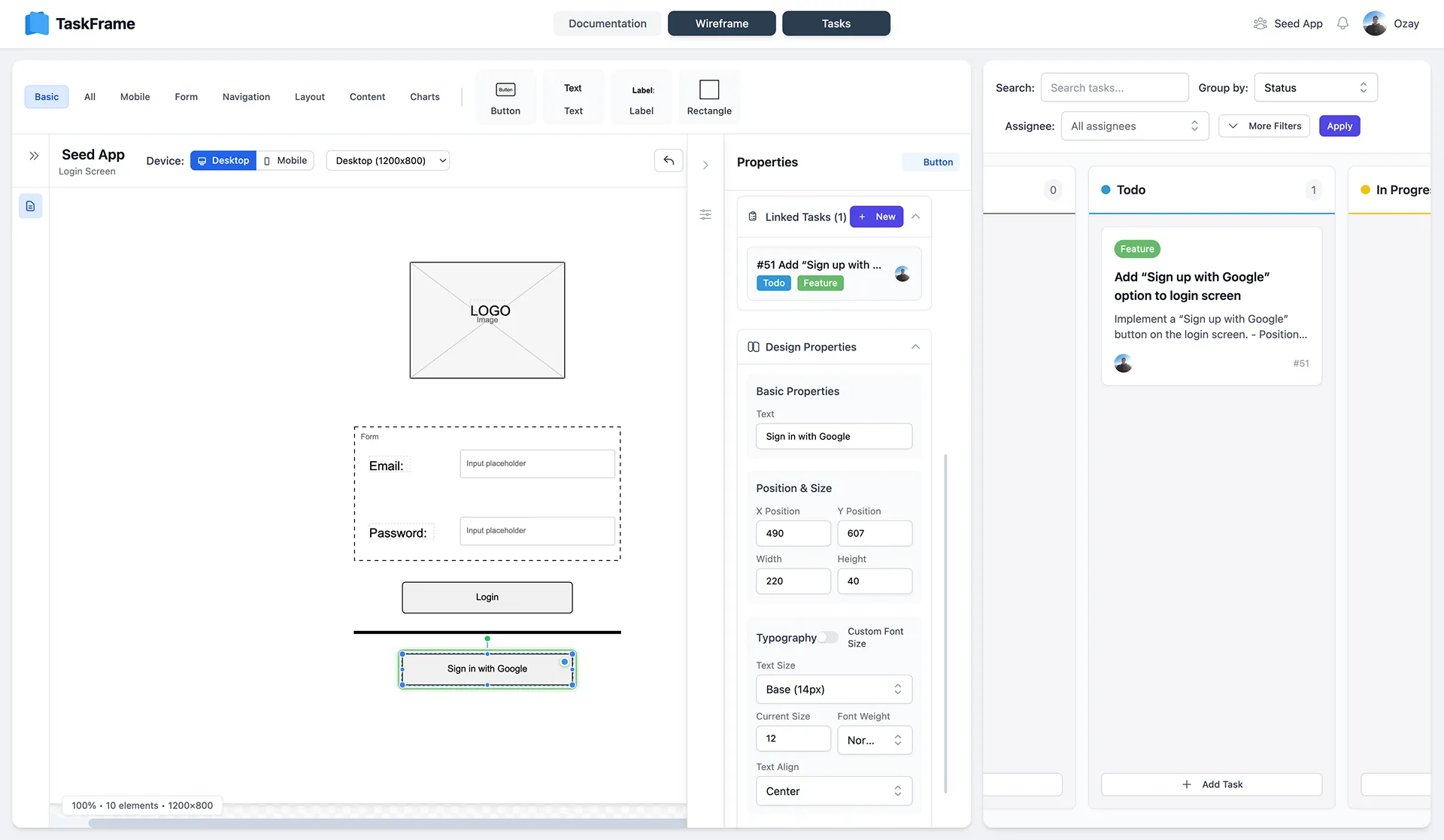
How TaskFrame helps
TaskFrame introduces a simple but powerful idea: right-click any wireframe element → create a task instantly.
That task is:
- Linked to the exact design element.
- Carrying the visual context forward.
- Immediately visible to both product and development.
This bridges the gap between design and execution. Instead of juggling two disconnected sources of truth (wireframes and task boards), TaskFrame unites them.
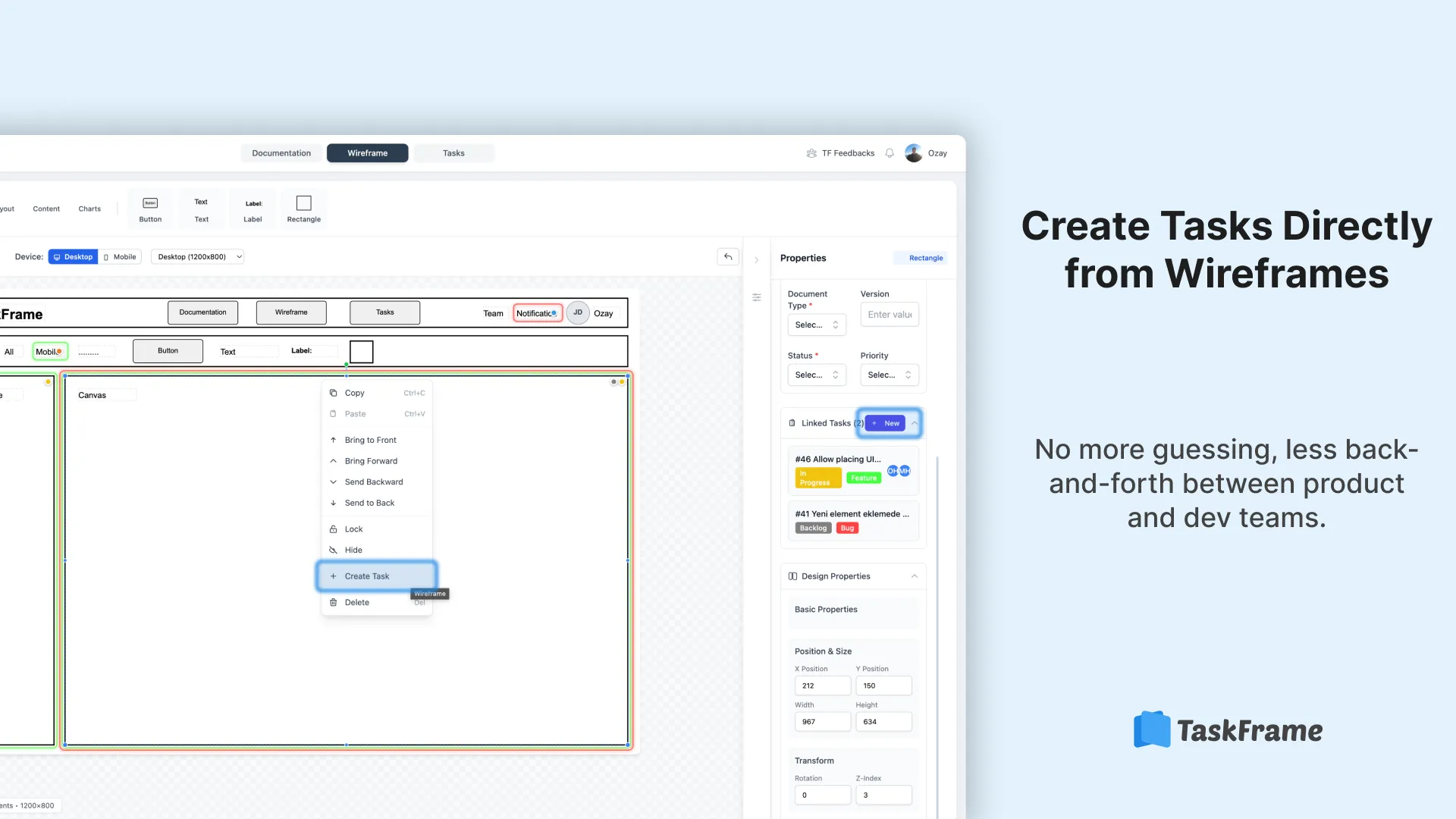
Benefits for teams
For developers
They see the target element and its details instantly. No more guesswork or hidden edge cases.
For product managers
They write clearer tasks faster and spend less time mediating between design and dev.
For designers
They maintain design intent throughout the process, reducing pixel-perfect revisions and misalignment.
For the whole team
Shared context means fewer meetings and faster delivery. Everyone knows what is being built and why.
A real example
A mobile app team had a recurring pain point. Their developer spent hours each week chasing clarifications about tasks. A simple request like “Add user settings” could mean three different things depending on interpretation.
After switching to TaskFrame’s wireframe-based tasks, the developer could immediately see the exact screen and element. Clarification requests dropped significantly, and delivery speed increased.
The product partner later commented:
“For the first time, I feel like our design and development speak the same language.”
Conclusion
When tasks are created directly from wireframes:
- Context is preserved.
- Communication improves.
- Teams deliver faster.
This simple shift transforms how product and development teams work together. If you are ready to reduce miscommunication and speed up delivery, explore TaskFrame today.
